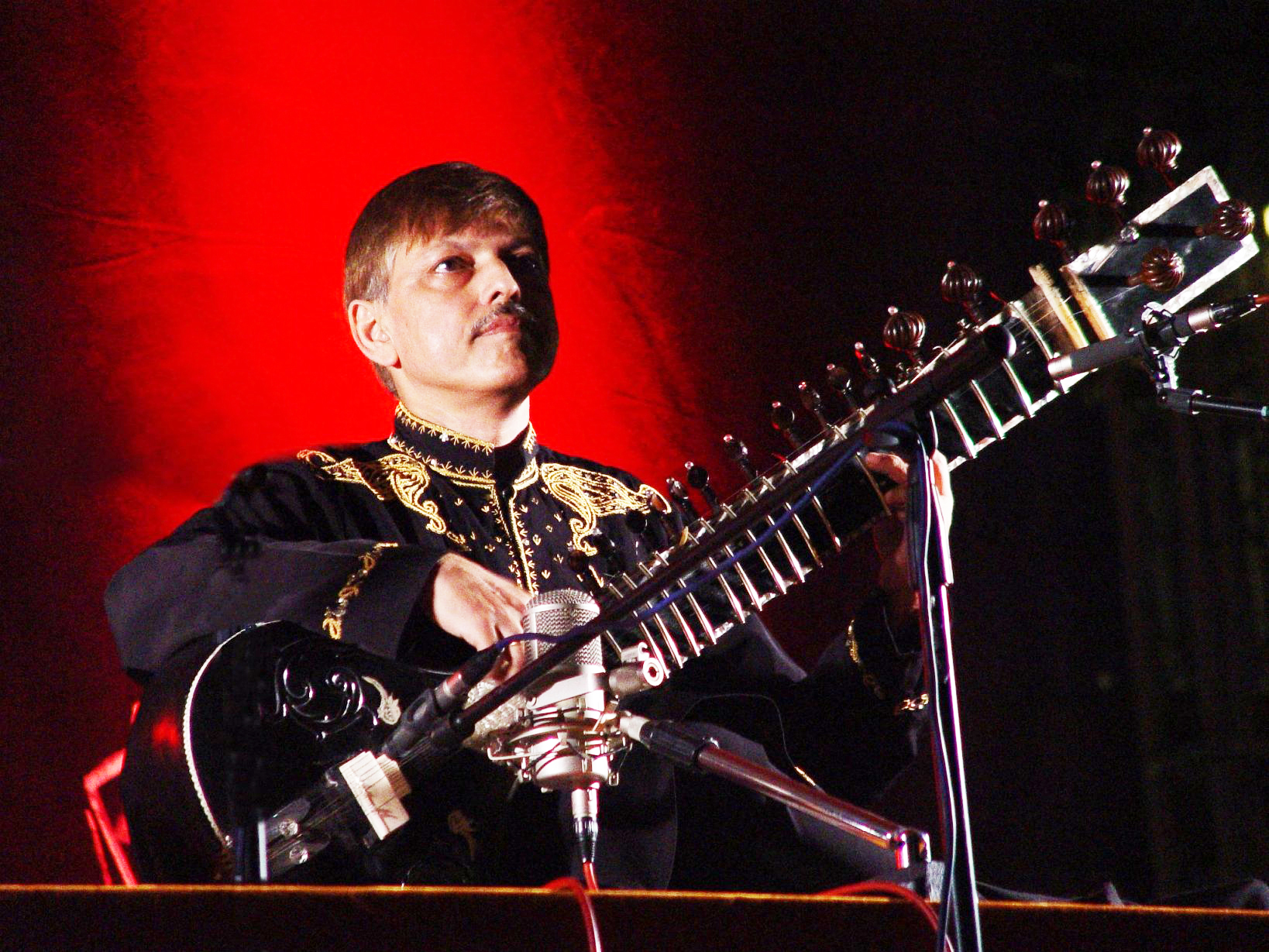SPOTLIGHT
Pandit Budhaditya Mukherjee to close Raag-Mala 2019 season
Pandit Budhaditya Mukherjee.
By RAJEEV GUPTA
I first heard Pandit Budhaditya Mukherjee when he played raag Malhaar at Rajbari in Kolkata on a rainy afternoon in March 2017.
To me, it felt as if the ancestors of the beautiful Rajbari were watching from heaven and applauding the performance with thunder. Towards the end of the recital, Panditji’s jhala overpowered the sounds of thunder in the background – a wondrous confluence of nature and music.
I became a huge admirer of Panditji that day and have heard countless hours of his music. At home, I listen to his Tilak Kamod as I draw Rangoli on the floor to usher in Diwali with auspicious festive tunes. Although 2017 was late for my discovery of a legend who created history by being the first Indian musician to perform in the British Parliament in 1990, it’s better late than never!
So I’m delighted that Raag-Mala Toronto has invited Panditji to perform at its 2019 season finale. A season that began with Bageshree sung by Vidushi Ashiwni Bhide cannot conclude with anything less than a scintillating sitar recital from the maestro Pandit Mukherjee.
Budhaditya Mukherjee is revered for his extraordinary command of the sitar and surbahar. When he was 22, veena maestro S Balachander described him as the “sitar artist of the century”. Recognizing his excellence, the President of India awarded Panditji the Padma Bhushan earlier this year – he was one of only fourteen awardees, and the only musician to receive the third highest civilian award.
Panditji’s musical journey began very early – when he was five years old, his father and guru Acharya Pandit Bimalendu Mukherjee gifted him a sitar and recordings of the masters of Hindustani music. Visits of prominent musicians, including Ustad Amir Khan, to the family home burned musical impressions into his young mind. Indeed, Budhadityaji recollects having sat on the lap of the legendary singer Ustad Bade Ghulam Ali Khan.
Soumen Nandy.
Just like his father, who pursued music while working full time as a key official at Bhilai Steel plant, Budhadityaji actively pursued music while graduating with a first class in engineering from Ravishankar University in Raipur.
His engineering and mathematical mind have led him to several modifications of the sitar. Not many people know that Panditji was dissatisfied with his own instrument for many years of his early career. He was looking for a sound to ignite his passion and let him find personal expression.
The tug-of-war between his mind and his music was a tension between the sound he sought and what he was producing. It was near impossible for him to explain in words the sound he sought, which was known only to him.
Thus began in 1995 a fifteen-year search for that elusive sound, which he calls “an errand of madness”. He collaborated with sitar craftsman Chundicharan Mondal and, after making and breaking over thirty five sitars, he finally discovered the sound that provided the aesthetic resonance for his imagination and thoughts. “It was this resonance,” Panditji noted, “that let Ustad Vilayat Khan express all his musical capabilities”.
While concert goers conjure up lightning speed when they think of Panditji’s music, the maestro himself disagrees: “Speed in sitar music is an incidental decoration, not the core on which aesthetics of sitar music stands.”
As a teacher, he tries to inculcate in his disciples the core principles of clarity and precision which are evident in his music. His distinctive lyricism has a clarity that reflects the vocal style performed on the sitar known as gayaki ang, which is characteristic of the Imdadkhani gharana.
With respect to Imdadkhani gharana, one must mention Panditji’s contribution in paying respect to Imdad Khan Sahib, who as per Indian tradition and culture, never spoke much about his name or of his music. Instead, Khansahib’s style of music came to be known as Etawah gharana because that was how he paid respect to the city of Etawah where he spent much of his life.
But at his first concert in 1976, young Mukherjee introduced the gharana as Imdadkhani gharana, paying tribute to Khansahib.
Today, Budhadityaji is among India’s most respected sitar exponents, and has held academic positions in Europe. He tours the world, thrilling audiences of both newcomers and connoisseurs.
Panditji will take to the stage with his long-time accompanist Sri Soumen Nandy on tabla.
Born into a classical music family Burdwan in West Bengal, Soumen Nandy started playing tabla at the age of six under Pandit Pankaj Chatterjee, a renowned maestro of Farrukhabad gharana and disciple of Ustad Karamatullah Khan.
Soumen also trained with Pandit Arup Chatterjee, renowned musician and son of Pandit Pankaj Chatterjee, and is a regular artiste on All India Radio and Doordarshan, and has been presented the Jnana Pravaaha Scholarship from the Governor of West Bengal.
The acclaimed partnership of the two musicians was received with much acclaim at their previous concert on the Raag-Mala stage.
You won’t want to miss this incredible opportunity to listen to their great artistry!
When and where. Saturday, Oct. 19 at 7:30pm, Aga Khan Museum auditorium, Toronto. For more, visit agakhanmuseum.org.
• Rajeev Gupta is a member of Raag-Mala Toronto.


